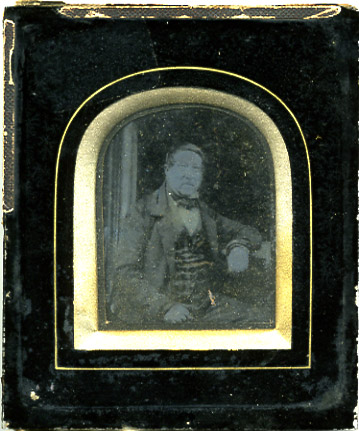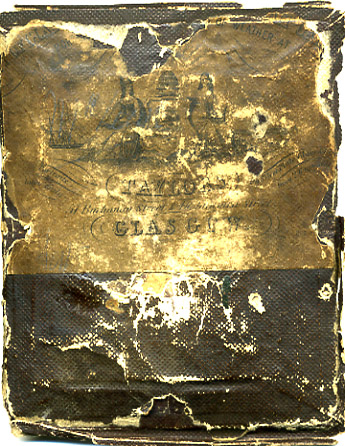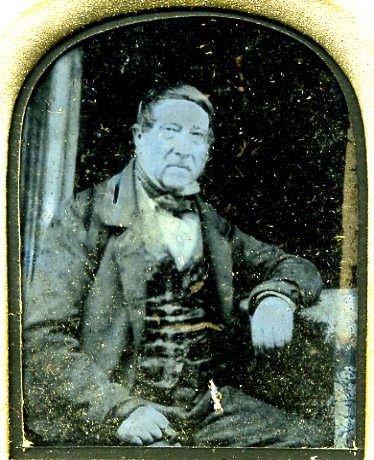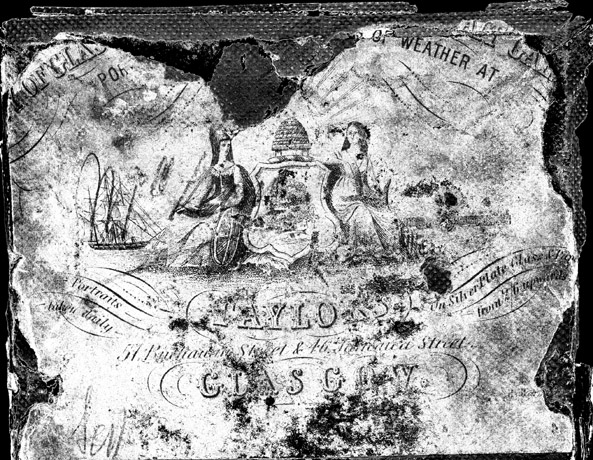John Taylor, 57 Buchanan St., only in 1855






This is a very early ambrotype, a process which was discovered in 1851, but only patented in America in 1854. In this process a wet colloidon plate is underexposed, and after development is placed against a dark background, so that he light parts of the negative appear dark, and vice versa. Here the outside dimensions are 9.5cms wide by 11.2 cms, and the glass negative appears to be about 6 x 8 cms which would make it a 'sixth plate' in size.
In this example, which has partly become separated, there is a glass protective plate on top, which is painted black on the back and bears the gold line. Then there is a thick card with the gold painted frame aperture, on top of the glass negative, and then the dark surface, which may in this case have been painted on the back of the glass. There then seems to be some rather bulky packaging at the back which folded round to attach to the front glass to hold it all together. Unusually, the glass negative is mounted with the emulsion at the front so that it is separated from the black backing by the thickness of the glass. This can give a slight '3-D' effect, but means that the image is reversed.


The lable at the top of the back identifies the studio as 'Taylors' and gives addresses at 57 Buchanan street and 46 Jamaica steet. Though we have Taylor at 57 Buchanan street in 1855, we only have him at 46 Jamaica street from 1857 till 1860, so 1856 or 1857 seem reasonable dates for this portrait. The label has further print at the top, one line of which was possibly 'Portraits (taken independent of ) weather at - '. Within the scrolls right and left are 'Portraits taken daily' and 'on silver plate glass and paper from 2/6 upwards'. The graphic shows the Glasgow coat of arms (with a beehive on top?) with Britannia on one side and 'Alba' (?) on the other. There is a sailing ship to the left, and some other structure on the right.
When obtained, this portrait had a modern looking sticky label attached with the name 'Toby Bunch', but the provenance of this is uncertain. It looks as if the face and hands had been tinted, and perhaps the shirt, but the colour has degraded. It is a rather crude assembly in comparison to later versions which were enclosed in an ornamented pinchbeck frame (See for example the entry for Dickson in St. Enoch square)